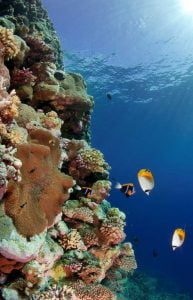
Why Scuba Divers Should Try Freediving: A Personal Perspective from an Scuba diving and Freediving Instructor
Hey everyone, I’m Matt, co-director of OceanSense Freediving here on the Sunny Coast. Over the

 All diving involves a degree of risk, because, after all, we are air-breathing mammals who have no sensible reason to be underwater. If we accept this premise, and admit to ourselves that we are voluntarily entering an alien environment, we are more likely to approach our diving with a sensible degree of caution. We must also acknowledge that we rely totally on our equipment while diving.
All diving involves a degree of risk, because, after all, we are air-breathing mammals who have no sensible reason to be underwater. If we accept this premise, and admit to ourselves that we are voluntarily entering an alien environment, we are more likely to approach our diving with a sensible degree of caution. We must also acknowledge that we rely totally on our equipment while diving.
These safety hints apply to ALL dives, and should be read in addition to those hints for specific types of diving.
 Complete safety stops on all dives that exceed 10m depth. Safety stops assist with reduction of excess nitrogen, which reduces the risk of DCI. They also slow your ascent rate, by forcing you to stop for a period of time. The rule of thumb is 3-5 minutes at 5-6 metres. An additional deeper stop of 2-3 minutes at 10-15m appears to be beneficial after deeper dives.
Complete safety stops on all dives that exceed 10m depth. Safety stops assist with reduction of excess nitrogen, which reduces the risk of DCI. They also slow your ascent rate, by forcing you to stop for a period of time. The rule of thumb is 3-5 minutes at 5-6 metres. An additional deeper stop of 2-3 minutes at 10-15m appears to be beneficial after deeper dives.Original article published on DAN

Hey everyone, I’m Matt, co-director of OceanSense Freediving here on the Sunny Coast. Over the
Join us Thursday 30th Jan at 5:30pm to hear David Mullins talk about nudibranch defences
Dear members, I would like to take this opportunity to inform you about a few